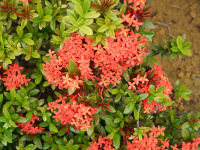Nov 19, 2009
Canon PowerShot S90 and Panasonic Lumix GF1: Foliage Fight!

I’ve decided to post some sample photos from the Canon PowerShot S90 and Panasonic Lumix GF1 cameras, since I had both with me today. I hope no one thinks this is a true, head-to-head fight: It’s NOT; the compact Canon S90 and entry-level SLR-class Panasonic GF1 are two completely different animals.
The Canon PowerShot S90 has the advantage of being small and light (it’s about the same size as an old Digital IXUS/ELPH I have), with dual control dials; while the Panasonic Lumix GF1 has a big image sensor and lens interchangeability. But both have full manual controls, produce 4:3 ratio photos and, after my mathematical calculations, bundled lens/resolution combinations that could offset each other to produce similar sized crops without resizing.
What you WILL get out of this little article is a sneak preview of production-level sample images from both cameras before I post their respective reviews. Some might also get a shock from reading my final thoughts… so go on and hit the link for all the juicy details and production-quality photos.
DPInterface Gallery Mashup:
Canon PowerShot S90 and Panasonic Lumix GF1
Foliage Shootout
Brad Soo –November 19th, 2009
Photos were taken using production, retail-level units of the Canon PowerShot S90 and Panasonic Lumix GF1. What you see here is what you’ll get using the camera on your local store’s shelves.
Sample crops
Photos were taken in Manual exposure mode at full-resolution on both cameras, using identical aperture/shutter speed/ISO settings and all other camera settings set to default. Canon PowerShot S90 shots were taken at 105 mm (35 mm equivalent) at 10 megapixels; while Panasonic Lumix GF1 shots were taken at 90 mm (35 mm equivalent; using Lumix 14-45 mm kit lens) at 12 megapixels. Crops cover similar areas because the S90’s photos taken at a longer focal length managed to offset the GF1’s higher resolution photos. Photos were taken hand-held in natural light with optical image stabilization set to ‘shoot only’ on both cameras. NO flash was used at any point.

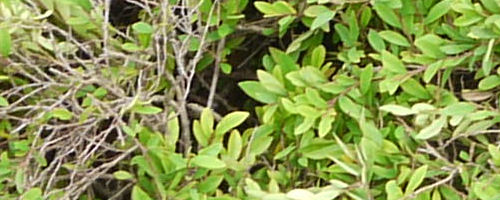
The Canon S90’s image of a bunch of leaves came out better exposed and more vivid than the output by the Panasonic GF1. Detail levels look similar, which isn’t surprising for a well-lit photo taken at low ISO, though one can observe that the dynamic range of the S90 is quite decent (I can still see the twigs in the dark area under the foliage).
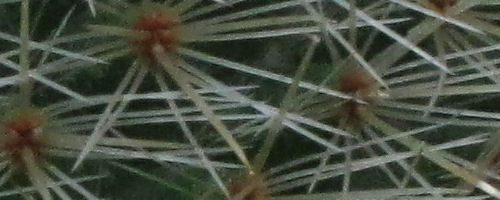
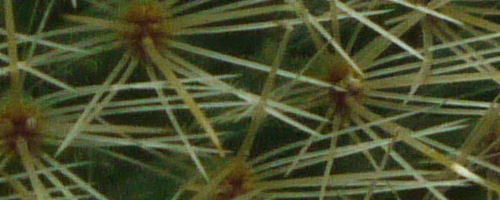
Both cameras performed similarly, again, shooting a cactus indoors under fluorescent lighting. The Canon S90 uses noise reduction which is a tad heavier than that of the Panasonic GF1 but difference isn’t noticeable here. As I was shooting handheld using both cameras, I found the Canon S90’s image stabilization was slightly more effective than the Panasonic GF1’s 14-45 mm lens image stabilization – it took 3 tries to get a sharp photo using the S90, while it took 4 attempts using the GF1. I do prefer the GF1’s more accurate white balance here, however.
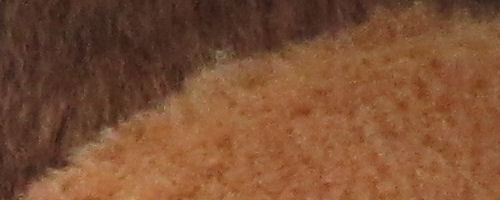

So this isn’t a plant or flower… it’s the Great Root Bear plushie! Do you know how long A&W has been operating in Japan as of 2008? (Answer is in the full-sized photo below). But anyway, this isn’t a plug for the root beer renowned restaurant chain… it’s just that their soft toy does a nice job at showing the different ways both cameras handle noise!
The Canon PowerShot S90’s small sensor combined with noise reduction mashes up all the fine details. And here is where the Panasonic Lumix GF1’s larger sensor is at an advantage with lower noise; allowing the camera to utilize less noise reduction and reproduce the fibers/fur you see above. Somehow, the Canon PowerShot S90 managed to turn the tables here in terms of auto white balance accuracy and did a better job here (the GF1’s shot looks a little too bluish).
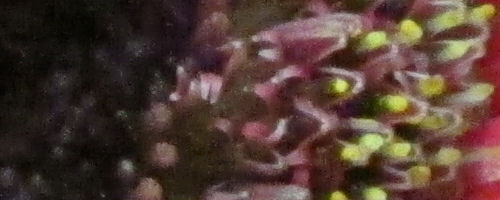
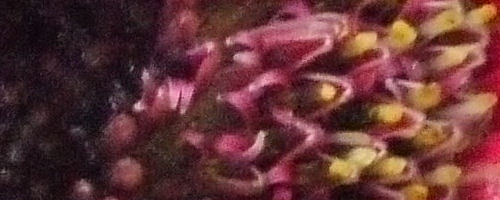
The GF1 did a much better job here, hands down. Not only does it produce sharper and more detailed pictures at ISO 3200, the colors are vivid too (the S90’s noise reduction caused color saturation to drop drastically). But then again, we’re talking about the Panasonic Lumix GF1 here, with a large sensor, compared to the compact Canon S90. I’m gonna give the Canon S90 some credit here – it still held up pretty well against a bigger, badder camera and I could still produce 4 x 6 prints from the S90’s ISO 3200 shots.
My Thoughts
And the winner here is… [drumroll please]… well, both cameras are winners here. The Canon PowerShot S90 does a remarkable job in terms of image quality, both as a compact camera and at holding up against an SLR-class camera. I think that’s really saying something about the ‘low noise’ 10 megapixel sensor that Canon put into the PowerShot S90, and its bigger cousin, the PowerShot G11. Watch out EXR sensors, here comes the PowerShot S90 (we’ll probably get to that in the final review which will compare the S90 against other small cameras!)
The Panasonic Lumix GF1 on the other hand, proves that you can get very good photos using a compact (versus conventional digital SLRs) Micro Four Thirds body. The camera is a viable alternative if you’re looking for a small-ish camera with the image quality of an SLR. It’s not as small as fixed-lens compact cameras and it certainly costs more (and even more if you’re planning on buying more/better lenses for it), but on days where I decide to wear my pants with extra-large pockets out, I could easily dismantle the camera to fit the GF1 body into the left pocket, and its 14-45 mm lens into the other.
Canon PowerShot S90 full-sized samples
Clicking on the photo thumbnails will open up a full-sized version of the photo, taken straight out of the camera with no editing or post-processing done. Be warned that the file sizes of full photos are very large and may take time to load. All photos were taken at full resolution, Fine quality, optical image stabilization on and using the camera’s default settings unless otherwise noted.
|
Panasonic Lumix GF1 samples gallery
Clicking on the photo thumbnails will open up a full-sized version of the photo, taken straight out of the camera with no editing or post-processing done. Be warned that the file sizes of full photos are very large and may take time to load. All photos were taken at full resolution, Normal quality, optical image stabilization on and using the camera’s default settings unless otherwise noted. The lens used was the Lumix 14-45 mm f4.0 – f5.6 OIS kit lens. Focal lengths listed are 35 mm equivalent.
|
Notice: Photos from any photo gallery on the site are only for personal use to assist you in choosing a digital camera. You may save and print them out for personal use only (ie. to see if image quality meets your expectations). You may not post these photos anywhere for any use whatsoever, including but not limited to, any website, newsletter, magazine, print, book or online/offline in any method without prior consent. Hotlinking is not allowed. These photos are property of and copyright DPInterface, its site and webmaster. I’m not trying to be mean or anything - I’m just preserving my copyright and hard work to take these photos. If you really want to use test or camera view photos from DPInterface.com, please e-mail me and ask for permission.






